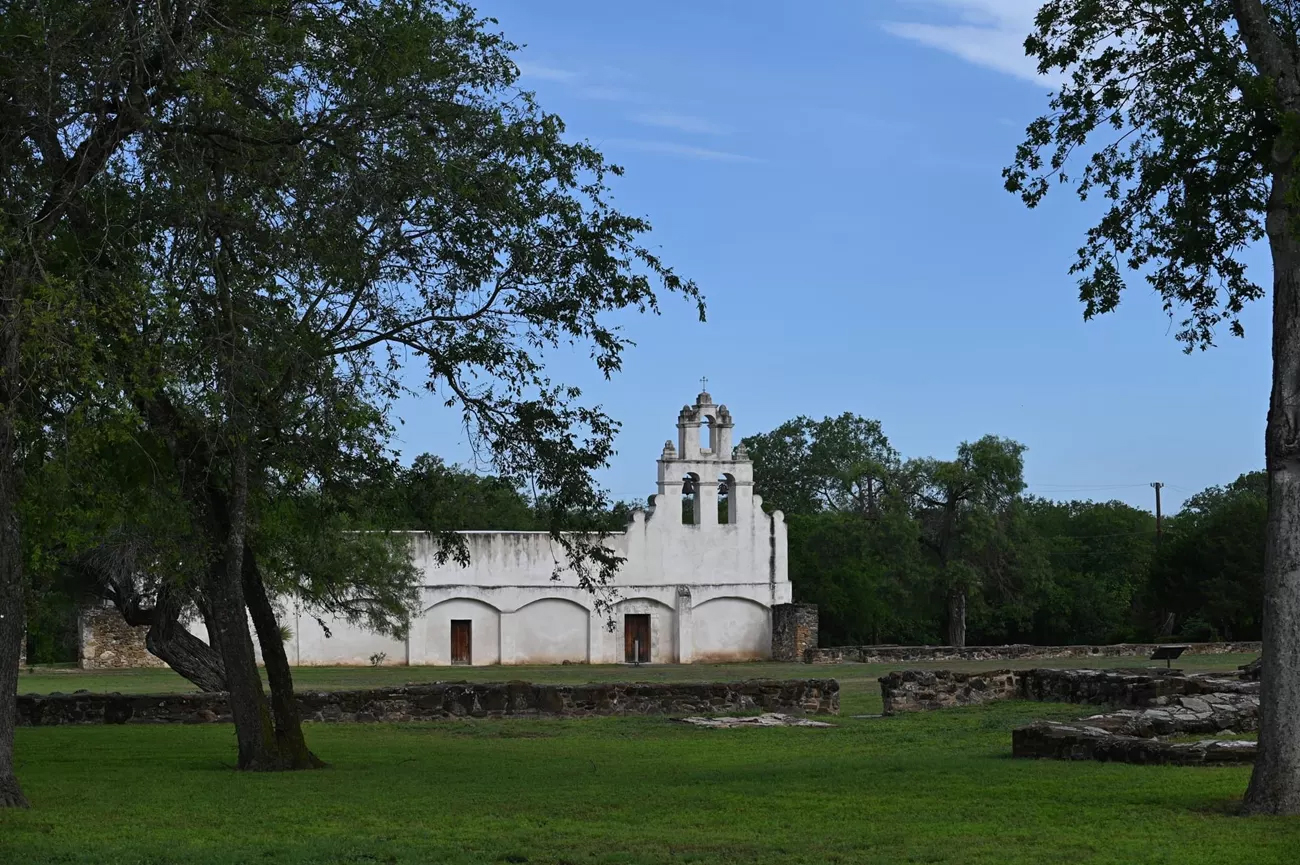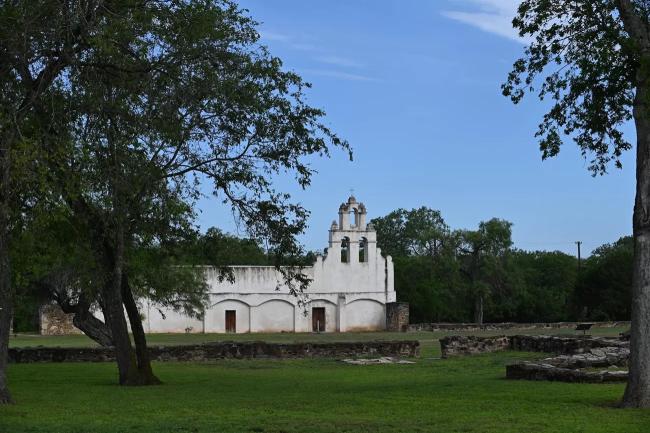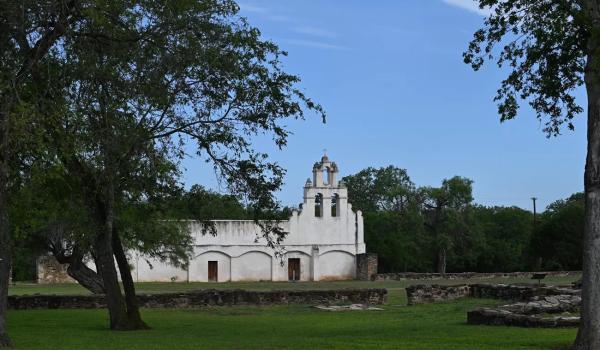Misión San Juan Capistrano
Route element
Misión San Juan Capistrano
Originally founded in 1716 in eastern Texas, Mission San Juan was transferred in 1731 to its present location. In 1756, the stone church, a friary, and a granary were completed. A larger church was begun, but was abandoned when half complete, the result of population decline.
This serene rural setting seems to silence voices of the past. Yet if you linger, you may sense those voices echoing from the limestone walls. On any day, it is common to hear the inhabitants of San Juan’s still active community. They continue to visit the mission grounds, enjoying the natural and spiritual elements of their neighborhood mission.
Mission San Juan was a self-sustaining community. Within the compound, Indigenous artisans produced iron tools, cloth, and prepared hides. Orchards and gardens outside the walls provided melons, peaches, and pumpkins. Beyond the mission complex Indigenous mission farmers cultivated maize (corn), peppers, beans, squash, sweet potatoes, and sugar cane in irrigated fields. Over 20 miles southeast of Mission San Juan was Rancho de Pataguilla, which, in 1762, reported 3,500 sheep and nearly as many cattle.
These products helped support not only mission communities, but also the local settlements and presidial garrisons in the area. By the mid 1700s, Mission San Juan, with its rich farm and pasture lands, was a regional supplier of agricultural produce along the historic trading route, El Camino de Real de los Tejas.







